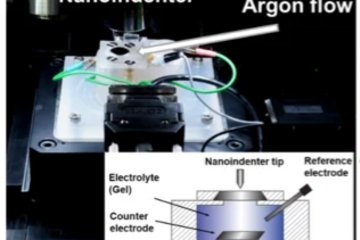All genres
41.
Journal Article
Strain Heterogeneity and Damage Nucleation at Grain Boundaries during Monotonic Deformation in Commercial Purity Titanium. Journal of Microscopy 61 (12), pp. 45 - 52 (2009)
42.
Journal Article
The role of heterogeneous deformation on damage nucleation at grain boundaries in single phase metals. International Journal of Plasticity 25 (9), pp. 1655 - 1683 (2009)
43.
Journal Article
Dislocation mechanics of creep. Materials Science and Engineering A 510-511, pp. 7 - 13 (2009)
44.
Journal Article
Dislocation glide velocity in creep of Mg-alloys derived from dip tests. Materials Science and Engineering A 510-511, pp. 393 - 397 (2009)
45.
Journal Article
Comparison of texture evolution in fcc metals predicted by various grain cluster homogenization schemes. International Journal of Materials Research 100 (4), pp. 500 - 509 (2009)
46.
Journal Article
New observations on high-temperature creep at very low stresses. Materials Science and Engineering A 510-511, pp. 20 - 24 (2009)
47.
Journal Article
Selecting sets of discrete orientations for accurate texture reconstruction. Computational Materials Science 42, pp. 670 - 678 (2008)
48.
Journal Article
Quantifying the distributions of dislocation spacings and cell sizes. Journal of Materials Science 43, pp. 2700 - 2707 (2008)
49.
Journal Article
On Predicting Nucleation of Microcracks Due to Slip-Twin Interactions at Grain Boundaries in Duplex gamma-TiAl. Journal of Engineering and Materials Technology 130 (02), pp. 021012-1 - 021012-12 (2008)
50.
Journal Article
Modelling the transition from strengthening to softening due to grain boundaries. Material Science and Engineering A 483-484, pp. 95 - 98 (2008)
51.
Journal Article
Iso-Work-Rate Weighted-Taylor Homogenization Scheme for Multiphase Steels Assisted by Transformation-induced Plasticity Effect. Steel Research International 78 (10/11), pp. 777 - 783 (2007)
52.
Journal Article
Strain-rate sensitivity of ultrafine-grained materials. Zeitschrift für Metallkunde 96, pp. 566 - 571 (2005)
53.
Journal Article
Bridging steady-state deformation behavior at low and high temperature by considering dislocation dipole annihilation. Material Science and Engineering A 400 - 401, pp. 175 - 181 (2005)
54.
Journal Article
Migration of subgrain boundaries under stress in bi- and multi-granular structures. Physica Status Solidi 200 (2), pp. 339 - 345 (2003)
55.
Journal Article
Harper-Dorn creep and specimen size. Metallurgical Transactions A: Physical Metallurgy and Materials Science 33 (2), pp. 305 - 310 (2002)
56.
Journal Article
Understanding creep – A review. Metallurgical Transactions A: Physical Metallurgy and Materials Science 33, pp. 291 - 303 (2002)
57.
Journal Article
Understanding creep – a review. Metallurgical Transactions 33A, pp. 291 - 303 (2002)
58.
Book
Crystal Plasticity Finite Element Methods in Materials Science and Engineering. Wiley-VCH, Weinheim (2010), 197 pp.
59.
Book Chapter
Spectral Solvers for Crystal Plasticity and Multi-physics Simulations. In: Handbook of Mechanics of Materials, pp. 1347 - 1372 (Eds. Hsueh, C.-H.; Schmauder, S.; Chen, C.-S.; Chawla, K. K.; Chawla, N. et al.). Springer, Singapore (2019)
60.
Book Chapter
Crystal Plasticity Modeling. In: Microstructural Design of Advanced Engineering Materials, 3, pp. 41 - 57 (Ed. Molodov, D. A.). Wiley-VCH Verlag GmbH Co. KGaA, Weinheim (2013)











